How many of these 40 retro kitchen items do you recognise?
Retro kitchen items from way back when

Zigzag Mountain Art / Shutterstock
From a cookie press to novelty teapots, it's likely you can remember plenty of unusual things from your grandmother’s kitchen. Offering a fascinating insight into the past, they are treasure chests of nostalgia and filled with items that have been lovingly kept for years.
Read on and let’s take a look and see how many of these retro items you recognise...
Salad spinner
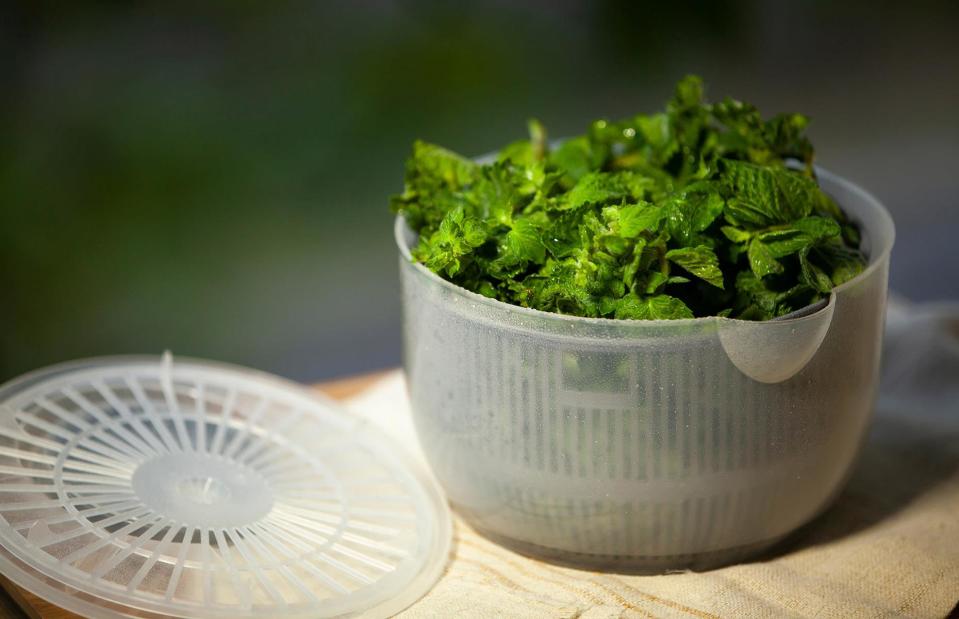
Den-T / Shutterstock
While it’s rare to find a salad spinner in a modern kitchen, this is one piece of old-fashioned kit that has never been surpassed.
With a simple spin of the dial in the lid, all your wet lettuce and washed vegetables are rotated at an alarming speed and the centrifugal force whips the water off them. They come out clean, dry and crisp – ready for dressing.
Butter curler
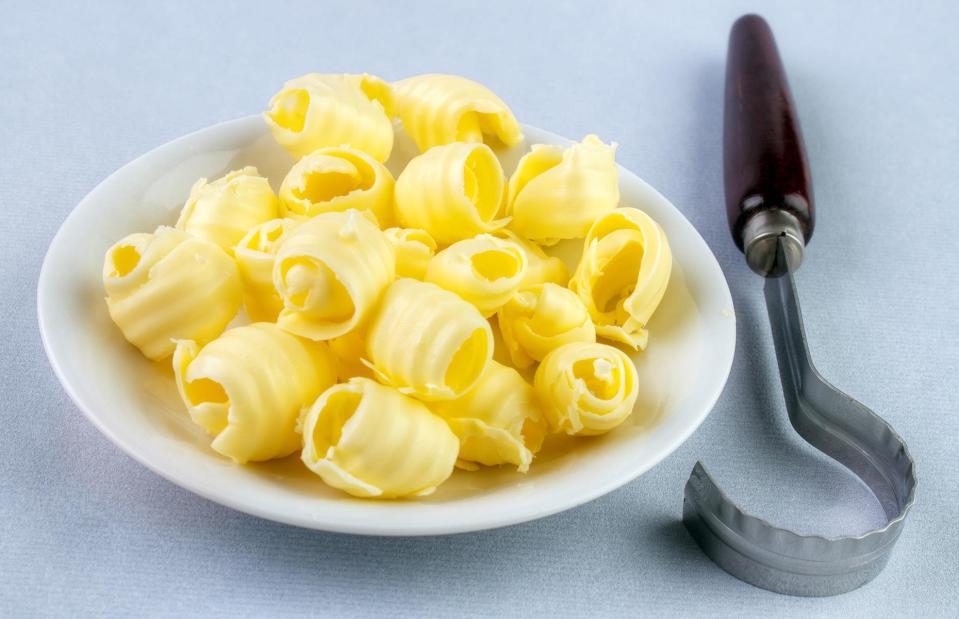
Ari N / Shutterstock
It might look like an antique torture device but this simple kitchen tool was used to pull curls of butter away from a hard block. This effectively softened the butter and they also looked lovely piled in a bowl on the breakfast table.
Flour shaker
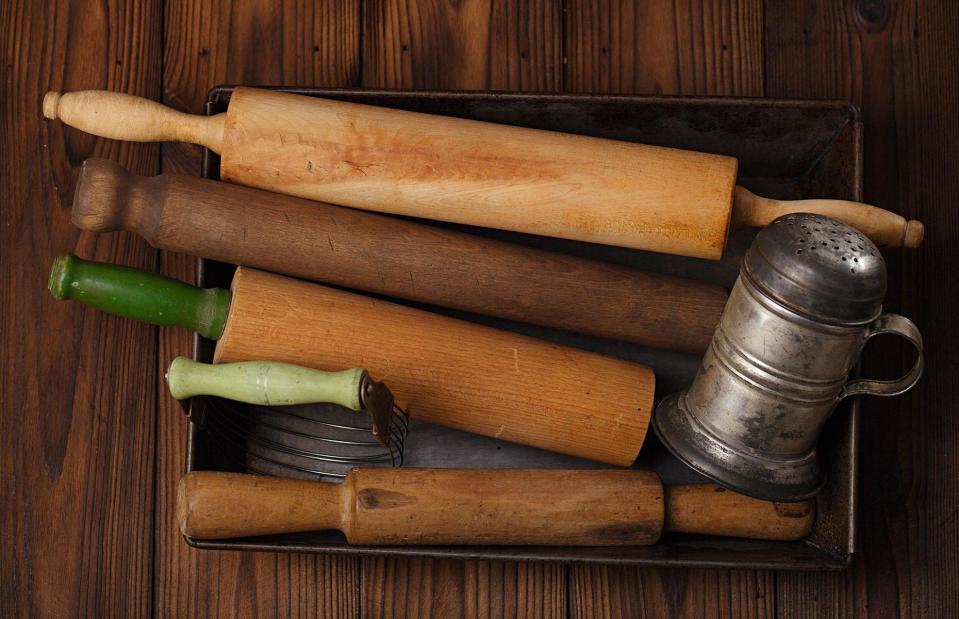
elena moiseeva / Shutterstock
No cook of our grandparents’ generation would call their kitchen complete without a flour shaker for quickly dusting countertops before rolling out pastry or kneading dough.
It might seem like a piece of equipment you can do without – and that is undeniably true – but ask any cake maker or bread baker and they’ll tell you that for consistent coverage and minimal waste, these flour sifters are worth their salt.
Manual food mincer
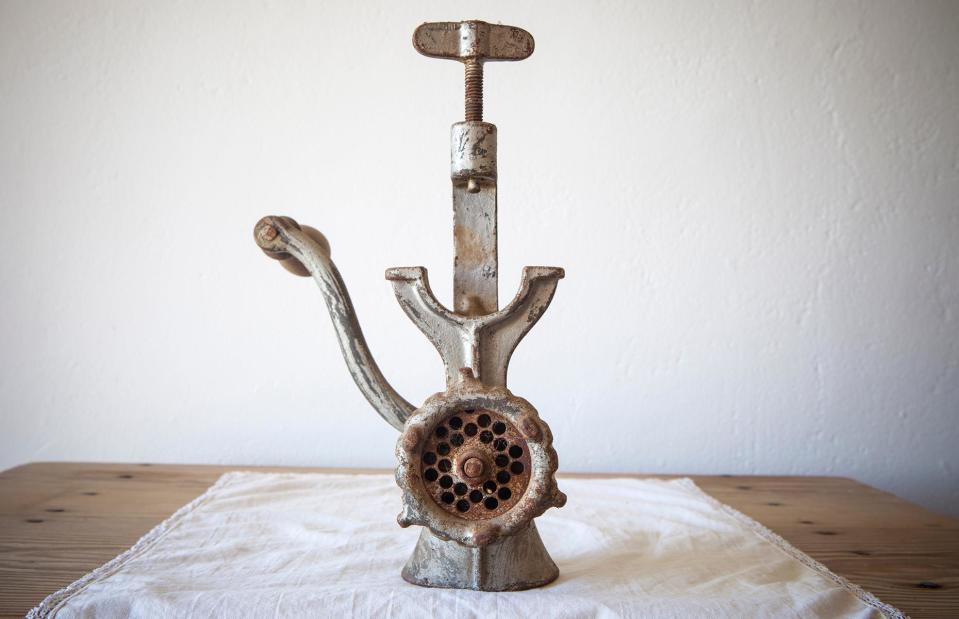
WH_Pics / Shutterstock
Before the days of KitchenAids, spiralisers and multitool food processors, much of the preparation for dishes was done manually.
Some brute strength was required to turn the handle on a kitchen counter mincer, breaking down beef steaks into mince and pork into sausages, and that’s why the suction cup was essential to keep it in place.
Lattice pastry roller
![<p>Roozitaa / Wikimedia Commons [CC BY-SA 3.0]</p>](https://s.yimg.com/ny/api/res/1.2/utW9.BZxlVobPRpygJyF9Q--/YXBwaWQ9aGlnaGxhbmRlcjt3PTk2MDtoPTYxOQ--/https://media.zenfs.com/en/loveproperty_uk_165/b0e87450c517e5361dcf85b2af1a9a3b)
Roozitaa / Wikimedia Commons [CC BY-SA 3.0]
Every grandma has their own killer recipe for a favourite dessert, from trifles to sponge cakes, but does anything quite match a lattice-topped cherry pie for pure nostalgia?
This neat lattice cutter is simply rolled along the pastry lid and by some genius feat of engineering creates a perfect crisscrossed pattern.
Manual weighing scales
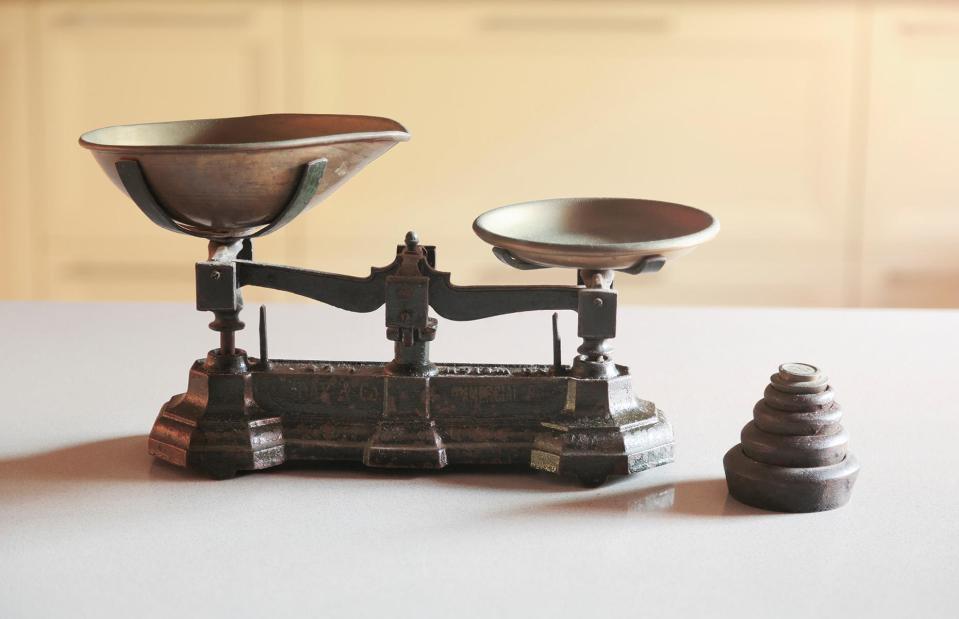
Dolunay_Sara / Shutterstock
Before the age of fancy digital scales, bakers would use these manual scales to measure out their ingredients. They came with weights that you’d use on one side to balance out the scales with your ingredients on the other.
Although classic weights aren’t common in most modern kitchens, some cooks may still enjoy using them for their rustic charm.
Fish kettle
![<p>Tangerineduel / Wikimedia Commons [CC BY-SA 4.0]</p>](https://s.yimg.com/ny/api/res/1.2/YeTN2MHh_.3bpBLj97i3IQ--/YXBwaWQ9aGlnaGxhbmRlcjt3PTk2MDtoPTYxOQ--/https://media.zenfs.com/en/loveproperty_uk_165/6ef6f71b09223c04d4560be02e63f9db)
Tangerineduel / Wikimedia Commons [CC BY-SA 4.0]
Thought to have been around since the 17th century, the fish kettle was the way to go for poaching a whole fish. With its hefty size and weight, most kitchens have now swapped their fish kettles for a space-saving pot, but it was useful for steaming vegetables alongside fish without it falling apart.
Although not as common now, since steamers have become the standard, your grandma may still have hers lying around.
Tea strainer
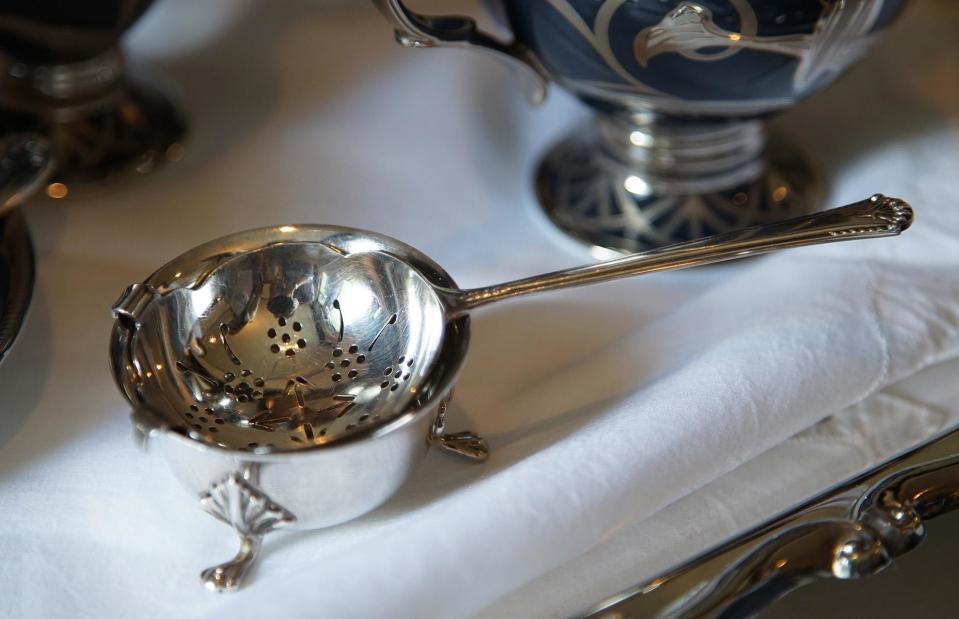
aozora4 / Shutterstock
Alongside matching tea sets and fine china, this classic tool was reserved for the wealthy during the 19th century when drinking tea was really popular. Before tea bags were invented, tea strainers were a staple for enjoying loose leaf tea during the afternoon.
Nowadays, with tea bags and the rise of teapots with built-in strainers, you may only see the old version at a traditional afternoon tea or brought out for special occasions.
Egg slicer
![<p>Rainer Zenz / Wikimedia Commons [CC BY-SA 3.0]</p>](https://s.yimg.com/ny/api/res/1.2/oneMzlohIX7NFF7KufmewQ--/YXBwaWQ9aGlnaGxhbmRlcjt3PTk2MDtoPTYxOQ--/https://media.zenfs.com/en/loveproperty_uk_165/cb95c2de9c2e9216abdf1132b05615db)
Rainer Zenz / Wikimedia Commons [CC BY-SA 3.0]
Invented in the early 20th century, the clue is in the name, this simple kitchen instrument is for neatly cutting your hard-boiled eggs into equal slices. Perfect for sandwiches, salads or garnishes, it was a favourite in many homes during the 60s and 70s for its easy-to-use convenience.
You can probably still find an egg slicer in some kitchen drawers and they’re still available in homeware stores.
Cookie press
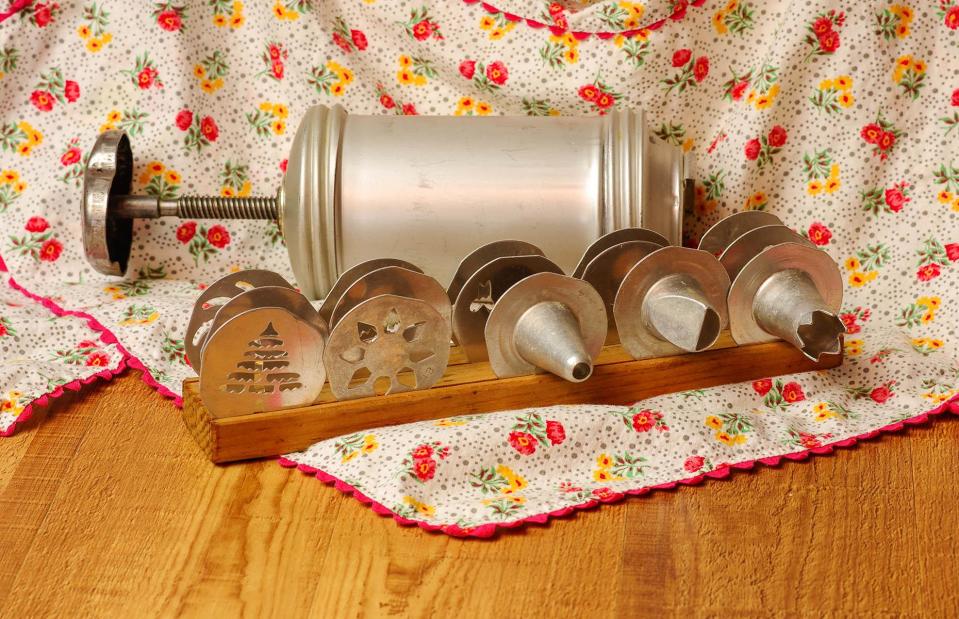
Zigzag Mountain Art / Shutterstock
For making cookies with that real wow factor, a cookie press was a popular baking tool in the 1950s used to make traditional Scandinavian Christmas treats, known as Spritz Cookies. The name comes from the German verb spritzen, meaning 'to squirt' as the dough is squirted and then pushed through the press to make pretty shapes.
Although no longer a baker's must-have, a cookie press may still crop up in some households during the holiday season.
Recipe card boxes
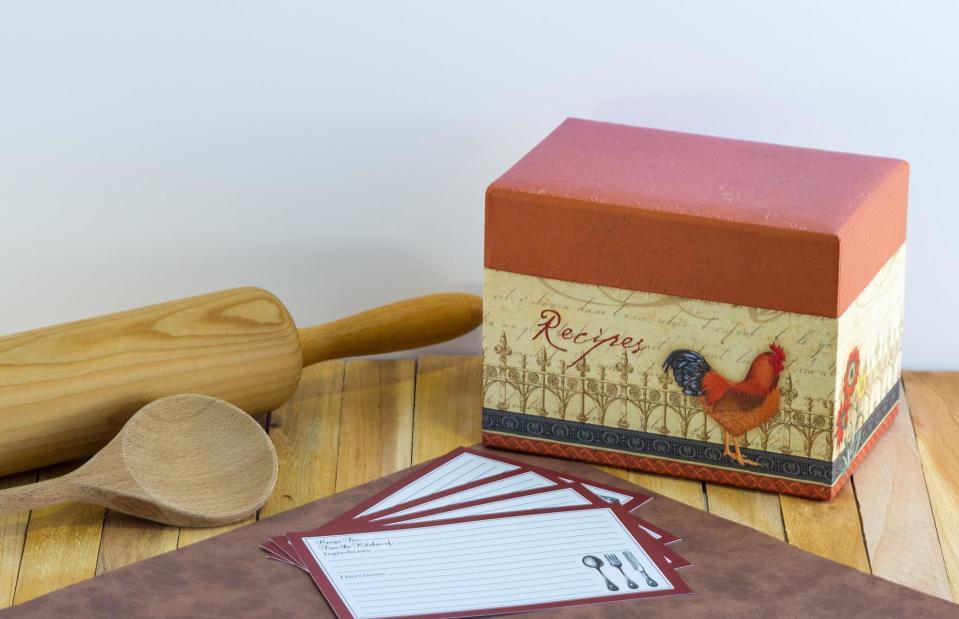
Kris Black / Shutterstock
Passed down through the generations, your grandma's recipe box may well be filled not only with stained and tatty index cards but also with secret family dishes that would otherwise have been forgotten. A treasure chest of history, a recipe card box could once be found in almost every home around the world.
The more time that passes, these historic gems become more precious than ever...
Butter dishes
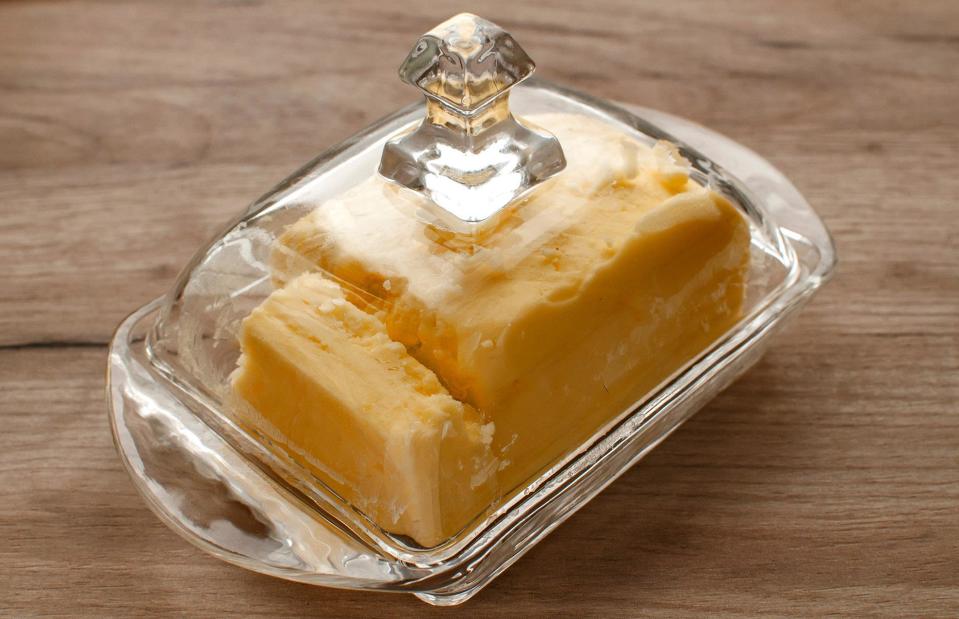
Alexander Varbenov / Shutterstock
Created circa 1880, butter dishes were once essential kitchenware. While some offered their own ice chamber to chill the butter, others simply kept it at the perfect temperature for spreading. They came in every shape, colour and material and many people will remember the clear glass design that would be laid out on the breakfast table with a pot of tea.
Nowadays, this traditional storage item is making a comeback, along with real butter. Hurrah!
Mesh food tents
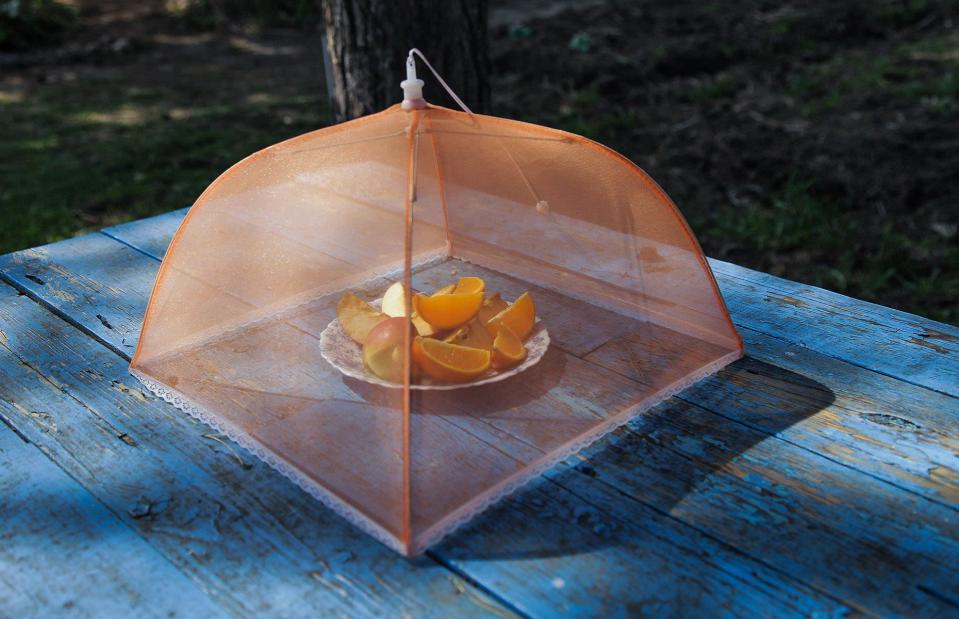
Vitaly Karyakin / Shutterstock
These food protectors served a purpose long before cling film became popular in the 1950s. It's likely most of us can remember visiting our grandparents, only to discover a freshly baked cake carefully stored underneath a wire umbrella.
Ideal for keeping flies away, these clever reusable covers can still be found gracing the kitchen tables of many a home baker.
Needlework art
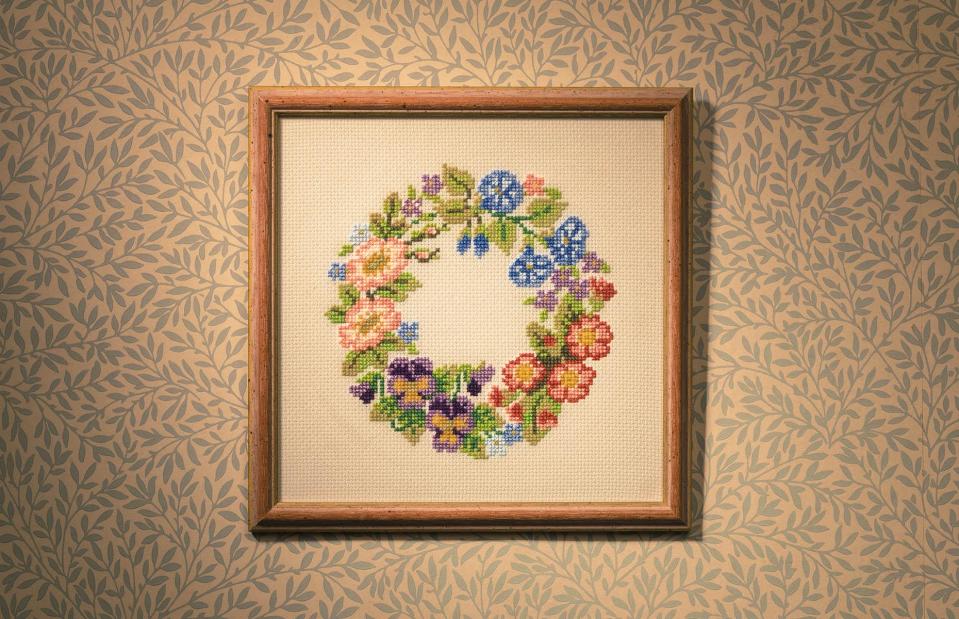
Stock Up / Shuttertsock
Before our kitchens turned minimalist and Scandi, decorative cross-stitch or embroidery pictures like this were all the rage.
The perfect accompaniment to a cosy farmhouse-style kitchen, handmade needlepoint depicting an appropriate culinary motto takes pride of place on many a grandma’s kitchen wall.
Cut-glass punch bowls
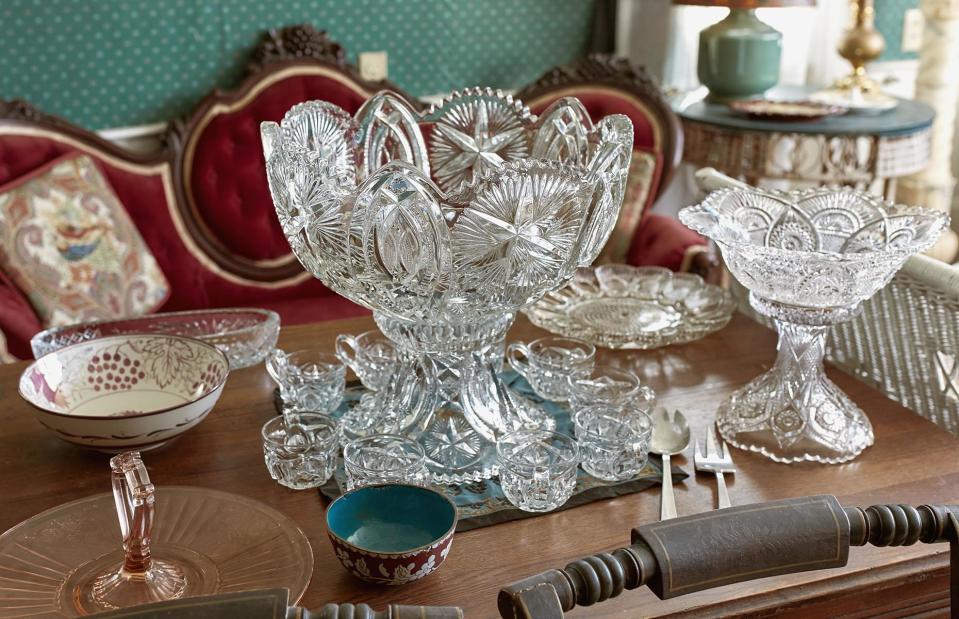
jenlo8 / Shutterstock
Back in the day, a party wasn't complete without a cut-glass bowl from which to serve the punch. Usually complemented by delicate matching glasses and a serving ladle, decorative punch bowls were big from the 1950s onward when socialising and dinner parties became the latest craze.
Many will remember their grandparents' heavy-duty basins, brought out for family celebrations, before being passed down to the next generation.
Bread boxes
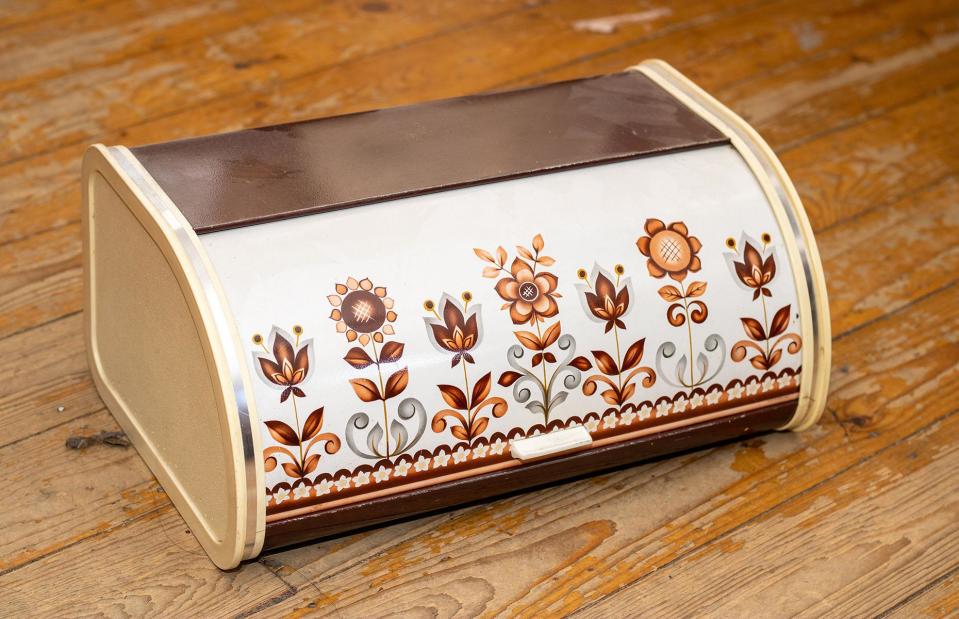
Go My Media / Shutterstock
Bread bins were invented in the early 20th century, back when your daily loaf came wrapped in paper and had a shorter shelf life.
An essential homeware item until the 1990s, when bread started to be produced commercially with added preservatives and wrapped in plastic, you may still find one of these storage bins on your grandma's countertops.
Tiered storage baskets
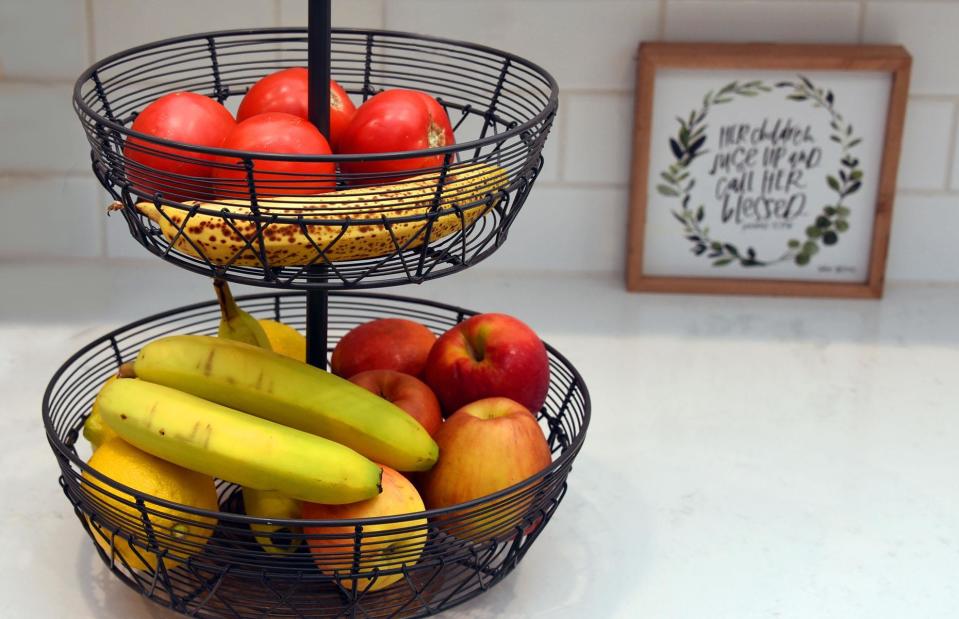
Bonita R. Cheshier / Shutterstock
Homeowners haven't always stored their fruit and vegetables in refrigerators. Instead, they placed their perishables in tiered baskets, which either hung from the ceiling or towered up from a stand that rested on the floor or counter.
You may well see a storage rack in residence in your grandparents' kitchen and there's a good reason to keep them in use. Certain root vegetables and fruits are much better kept in a cool, dark cupboard rather than in the fridge.
Decorative plates
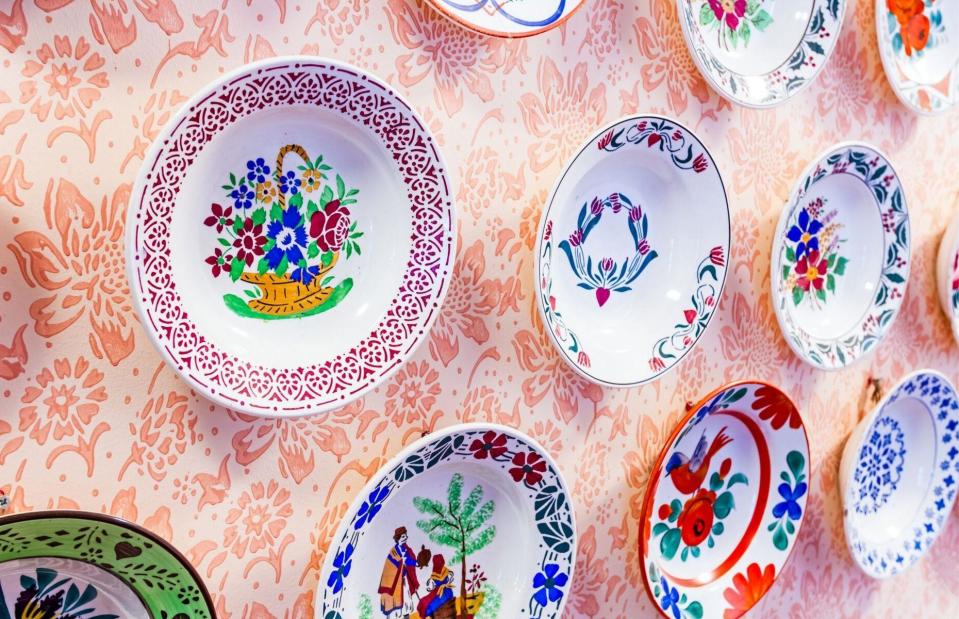
Roman023_photography / Shutterstock
There are two types of grandma: the first displays her china in a large cabinet, while the other places hers on the wall. Decorative plates were never to be used, however, and merely acted as an interior design flourish.
From Churchill china to Blue Willow earthenware, it's likely your grandparents' house is still overrun with an extensive collection of heavily painted porcelain, taking pride of place somewhere in the kitchen.
Jelly moulds
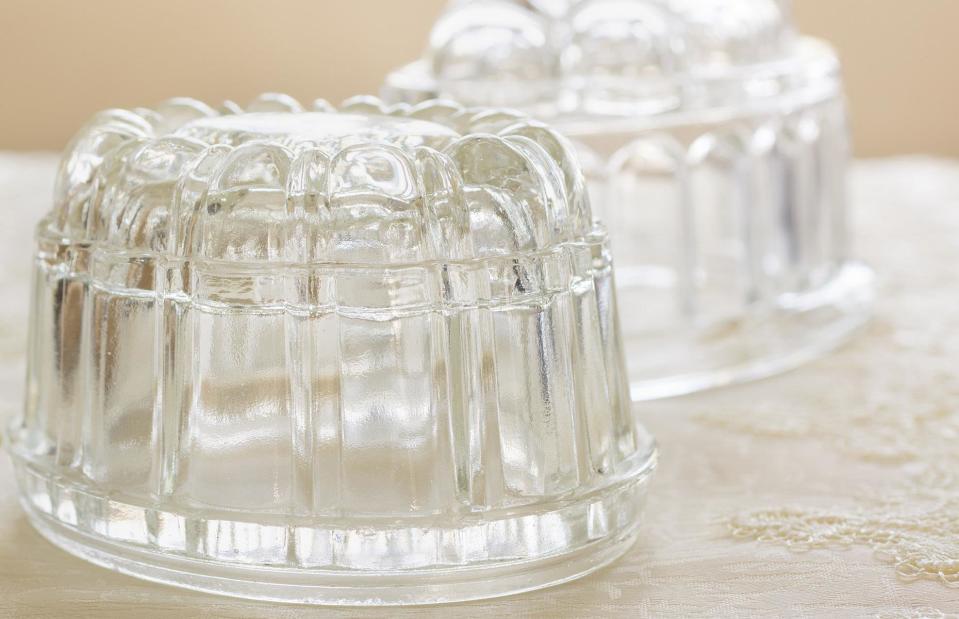
David Pimborough / Shutterstock
King Henry VIII served jelly at his state banquets and jelly moulds have been in production since the mid-18th century, so it's no wonder they have some staying power. From the 1930s onward, these weighty moulds became popular kitchen utensils but fell out of fashion with the advent of nouvelle cuisine.
Now somewhat obsolete, you may still be able to find these peculiar moulds in your grandma's cupboards and TV cook Nigella Lawson is a faithful fan.
Potato ricers
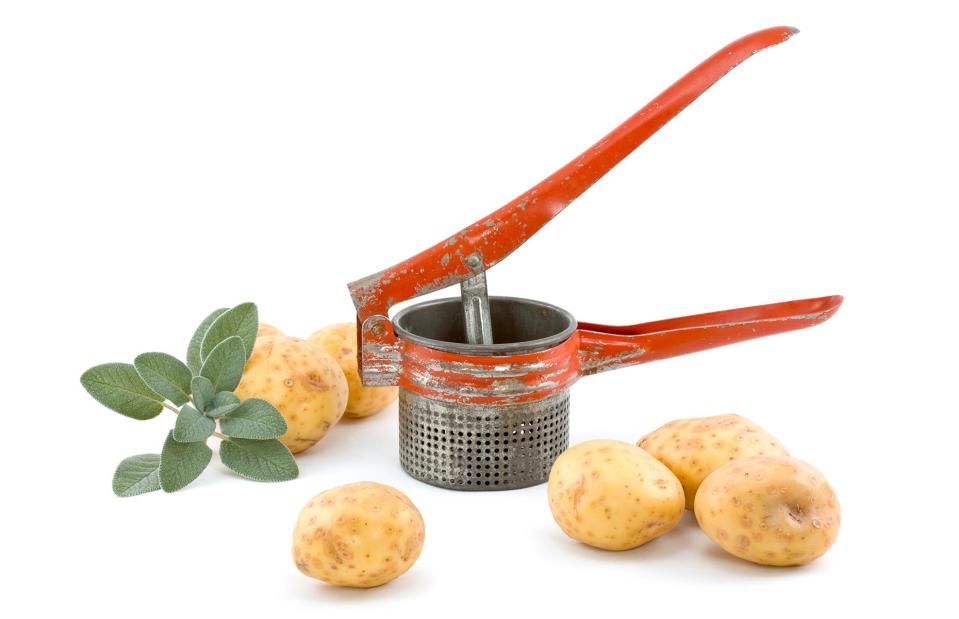
South12th Photography / Shutterstock
So out of date that many millennials may not even know they were once a thing, the potato ricer is one kitchen implement that we guarantee can only be found at your grandparents' house. Before the metal masher, the ricer was used to turn the humble potato into fine slivers, ready for the dinner table.
Big from the mid-1940s, the potato ricer is still used by chefs to get their mash silky smooth and by grandparents who know a thing or two about cooking.
Sink skirts
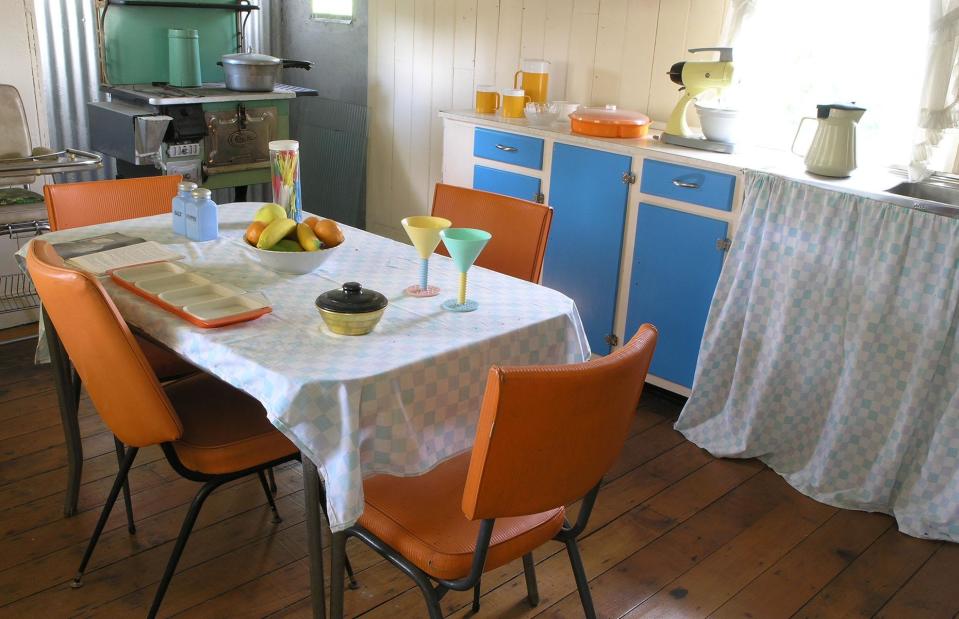
Steven Coling / Shutterstock
Designed to cover up unsightly plumbing while maximising storage space, and popular in retro kitchens of yesteryear, the sink skirt was once an attractive design feature in many a kitchen. Yet as tastes changed and modern cabinets became more popular, they quickly fell out of favour.
Now reserved for retro-inspired or English country spaces, this fabric decoration may still be in situ at your grandma's place and probably hasn't changed since it was hung many decades ago.
Tea and coffee containers
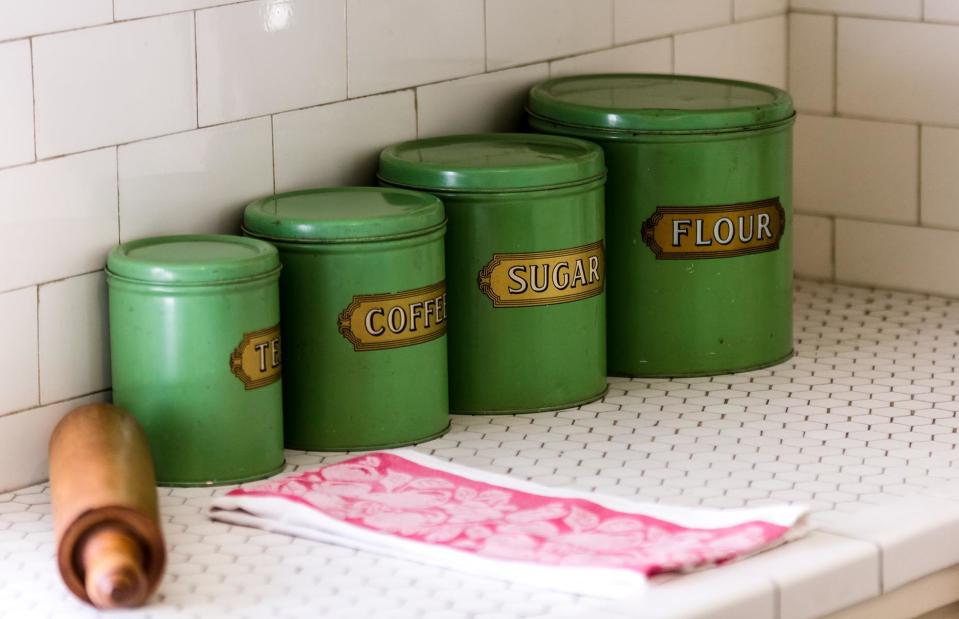
ddub3429 / Shutterstock
Long before contemporary storage tins were invented, our tea, coffee, sugar, biscuits and flour would have been kept in some sort of resealable jar. These matching canisters adorned countertops the world over and would generally match the kitchen tiles, cabinets and even the wow-factor wallpaper.
Now highly sought-after collectables, these cute containers may bring back some fond memories.
Decorative placemats
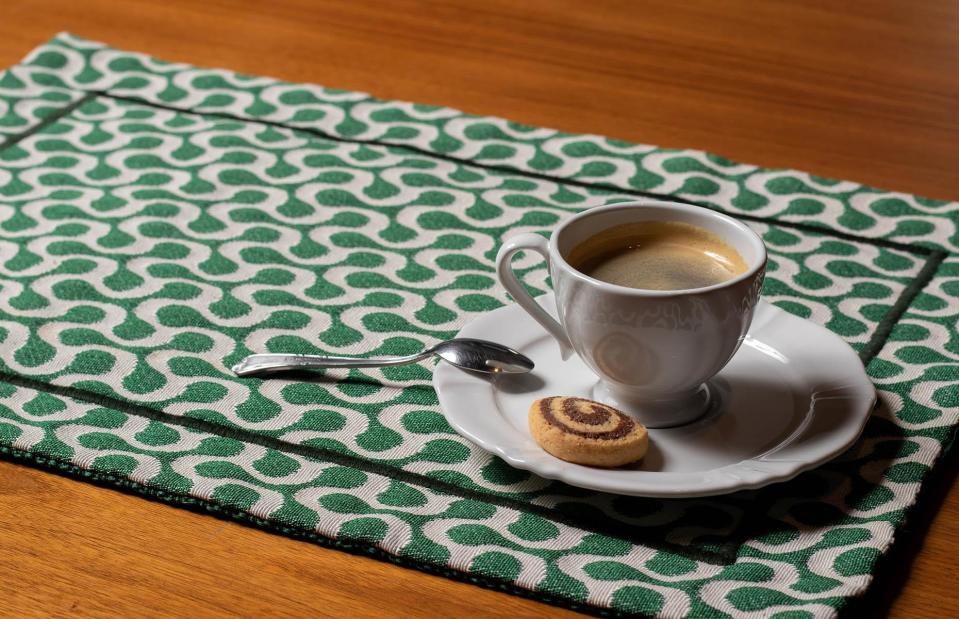
victorhugosilvafotografo / Shutterstock
Serving both a decorative and practical purpose, placemats not only protected dining tables from heat marks but also improved the overall presentation.
We can remember being asked to set the table for dinner, retrieving the mats and lining up the cutlery around them. It's still an essential today, and even cork is making a comeback.
Heavily patterned tiles
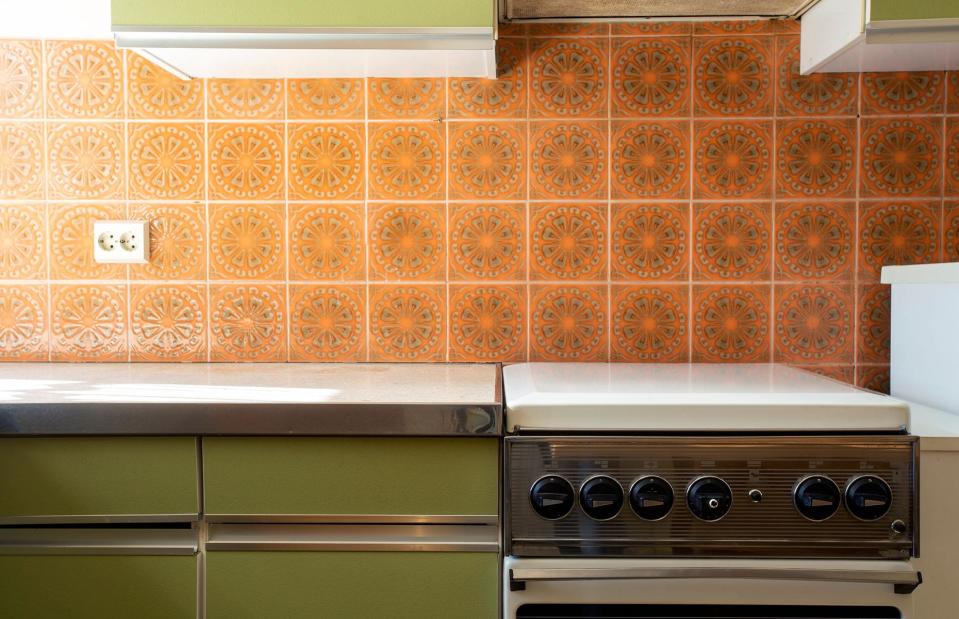
A-photographyy / Shutterstock
We do love a time warp home. But, thanks to changing interior trends, modern homeowners now want sleek, stripped-back kitchens with white finishes, leaving heavily patterned tiles behind. Back in the 1960s and 70s, though, many opted for vibrant tiles that covered everything from the walls to the floor.
We bet many grandmas out there still love their old kitchen décor and so do we!
Condiment serving trays
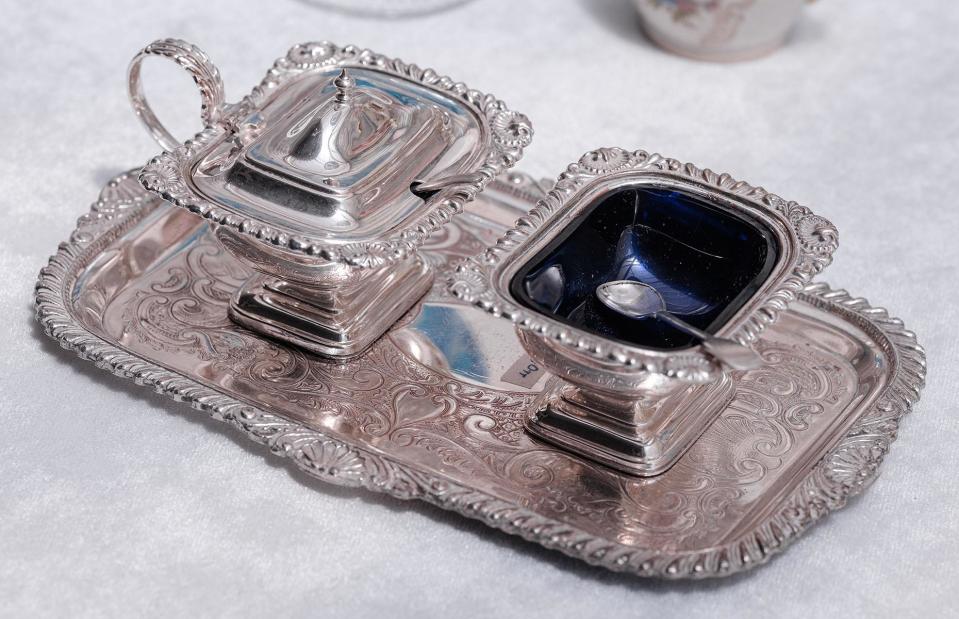
Khamitsevich Andrey / Shuterstock
Back in the day, a meal wasn't really complete without a condiment serving tray. The perfect place to decant your favourite sauces, this mid-century homeware was at one time the finishing touch on every dinner party table. It was also perfect for serving nibbles like nuts.
Whether formed from wood, glass, or plastic, every grandma around the world is likely to still own her original serving tray, perhaps bringing it out for Christmas or special occasions.
Dried goods
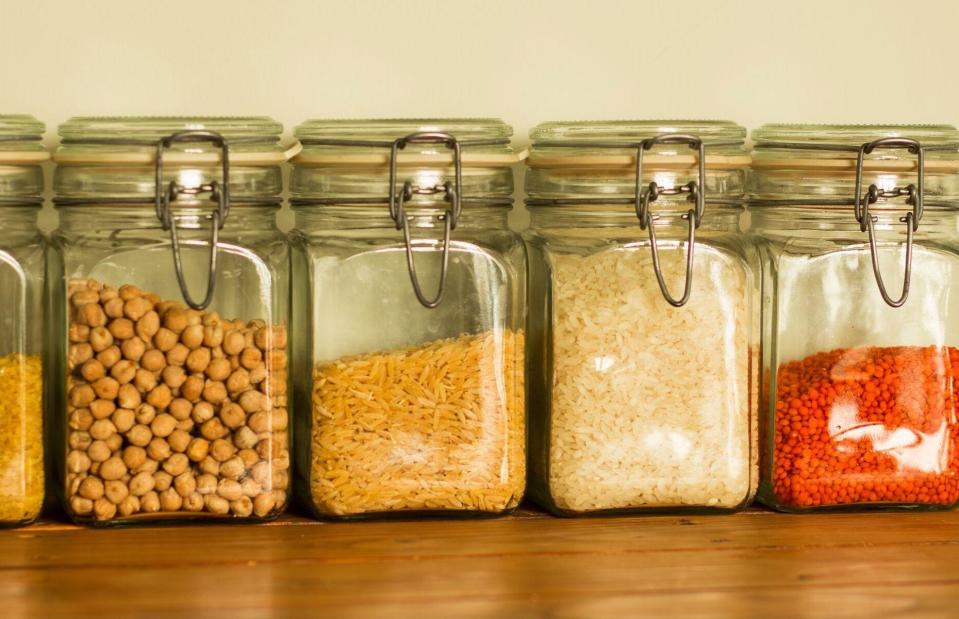
Bogac / Shutterstock
An old-fashioned homeware trend making a comeback, open shelving has experienced somewhat of a revival in recent years after the design trend faded away for decades in exchange for sleek and streamlined kitchens. Yet many traditional homes may still be sporting original open shelves, where glass jars of peas, pulses and preserves can be seen on display, making finding ingredients a piece of cake.
Ask your grandmother and you can bet there's a quantity of dried food stuffs stored away for a rainy day.
Matching tea set
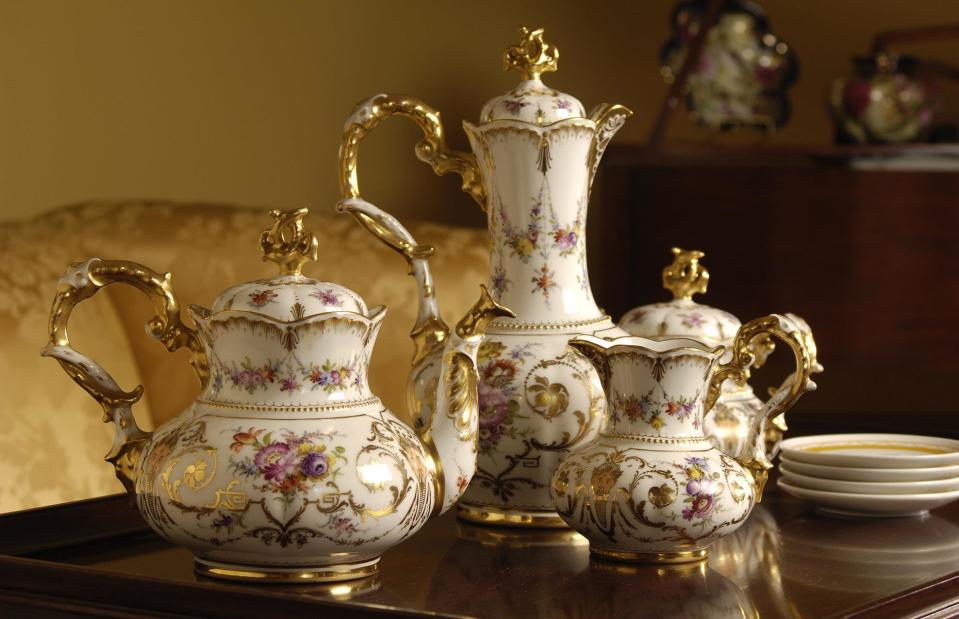
John Keith / Shutterstock
During the 1600s, tea became extremely popular throughout Europe but it was Queen Victoria who helped make service sets an essential household addition. Thanks to a growing fashion for afternoon tea, matching tea sets grew in popularity, changing from silverware to pretty floral ceramics and delicate china.
Still found adorning the kitchen tables of many a grandma, tea service sets are one nostalgic homeware item we can't help but love.
Manual hand mixers
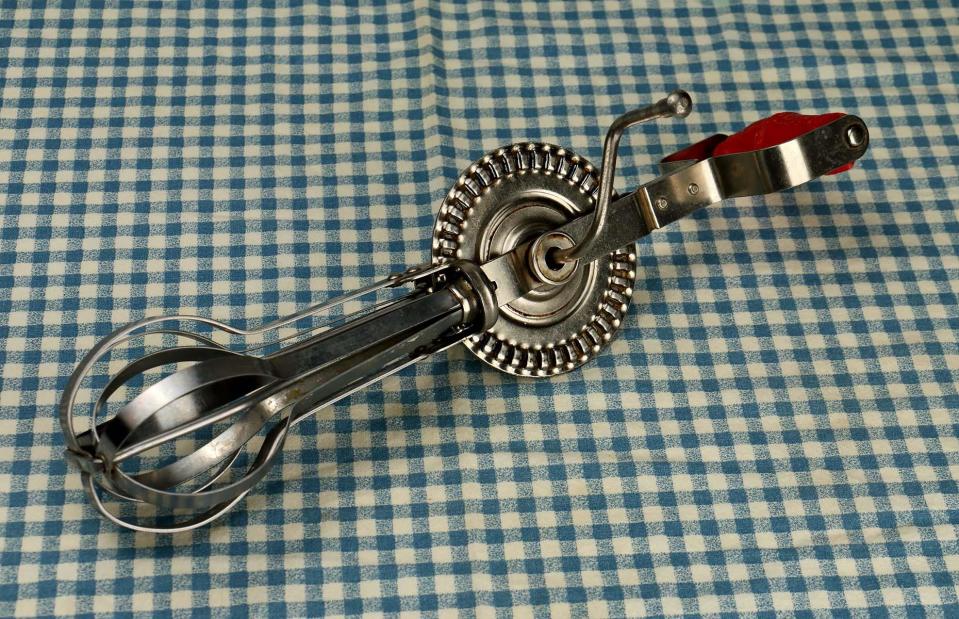
Roger Siljander / Shutterstock
Long before The Great British Bake Off made KitchenAid a household name, cooks would beat their cakes using manual hand mixers – an old kitchen tool full of nostalgia that has been lost to modernity. The hand mixer was a simple device, with two rotating whisks attached to a handle, aiding with the beating of any mixture.
Thought to have been invented in America in 1885, they were popular in homes until electric mixers began to take over the reins. Like so many simple machines, they still work perfectly.
Old cookbooks
![<p>Jackie / Flickr [CC BY 2.0 DEED]</p>](https://s.yimg.com/ny/api/res/1.2/gyXyKnKZogLSQ_oIba15Fw--/YXBwaWQ9aGlnaGxhbmRlcjt3PTk2MDtoPTYxOQ--/https://media.zenfs.com/en/loveproperty_uk_165/0ba7d6e36b5eff9fdde1955c9dcb4451)
Jackie / Flickr [CC BY 2.0 DEED]
We know what you're thinking: cookery books are still very much a thing today. Yet, there are certain books that you will only find adorning your grandma's kitchen shelves.
Well-thumbed, brown and coming away at the seams, these age-old cookbooks are filled with nostalgic recipes, passed down through the generations from the likes of Delia Smith and Mrs Beeton. Many pages will be stuck together with decade-old cake batter or gravy but that just adds to the charm.
Gravy boats
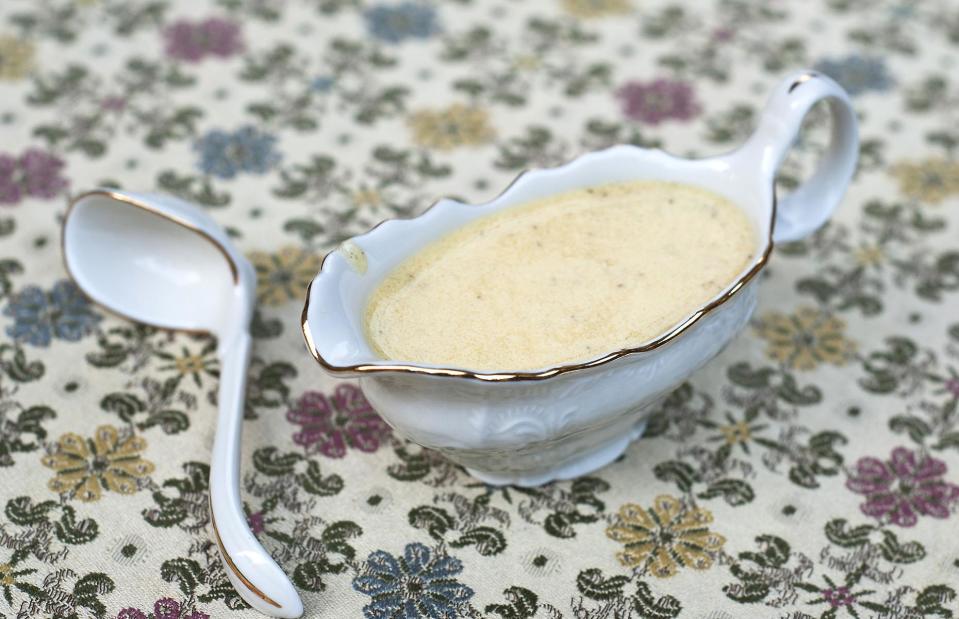
Rossa di sera / Shutterstock
Whether formed from silver or porcelain, gravy boats have been in use since the late 17th century. These sauce containers were the perfect addition to a neatly laid table, featuring a spout for pouring and a matching plate for catching any drips.
Once the height of sophistication, it's likely your grandparents still have a pretty little gravy boat at home, that makes an appearance during Sunday lunches and Christmas dinners.
Novelty teapots
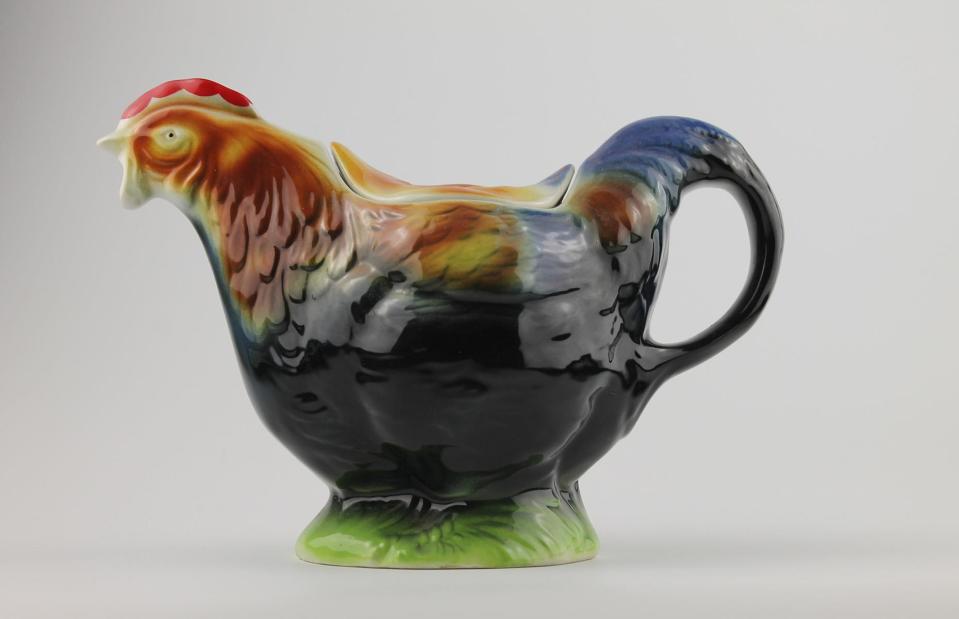
Susan Edmondson / Shutterstock
Was it just our gran that collected novelty teapots? Often found advertised in the back of magazines, the array of shapes and styles was seemingly endless; from country cottages to sewing machines.
But it was the animal designs that entranced us most as children and, we have to admit, they are still brilliant, whether adorning a kitchen dresser or retro living room.
Novelty tea towels

Emil Gasi / Shutterstock
Novelty tea towels were once incredibly popular – an essential keepsake brought back from every holiday or day trip. Yet although modern tastes have changed and people turned to clean and streamlined designs instead, the desire for souvenir tea towels has not quite disappeared.
We bet some houses are still rocking these highly kitsch items and perhaps your grandparents' home is one of them...
Net curtains and skirts
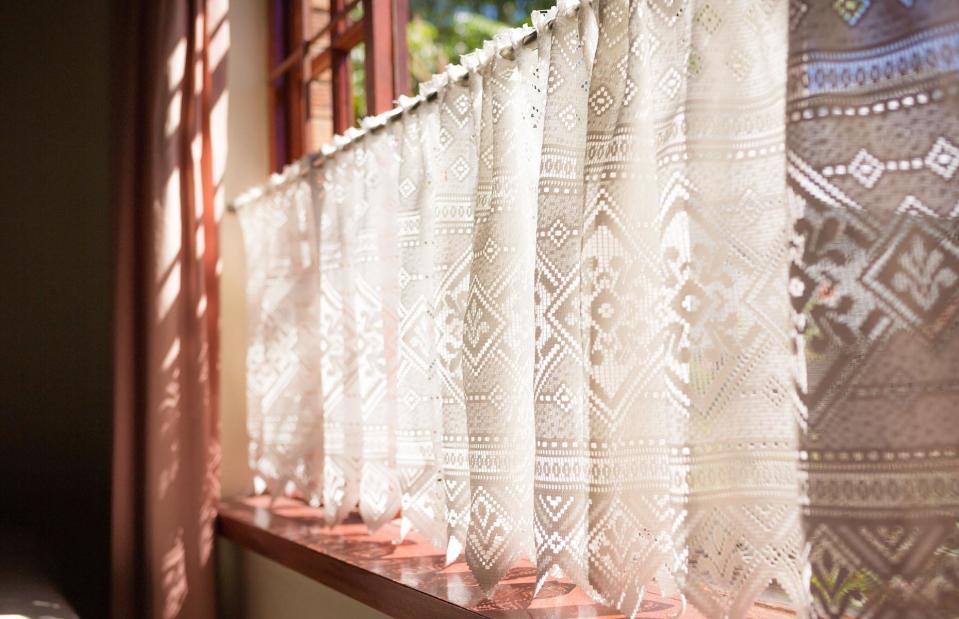
Hae-kyung Jeong / Shutterstock
Delicate lace curtains could once be found adorning the windows of almost every house. Though highly practical, these old-fashioned homewares weren't exactly attractive.
Adding an extra layer of privacy to ground floor rooms, net curtains also allowed natural sunlight to flood indoors, without any unpleasant glare. Another retro homeware that's actually very practical!
Cake stands
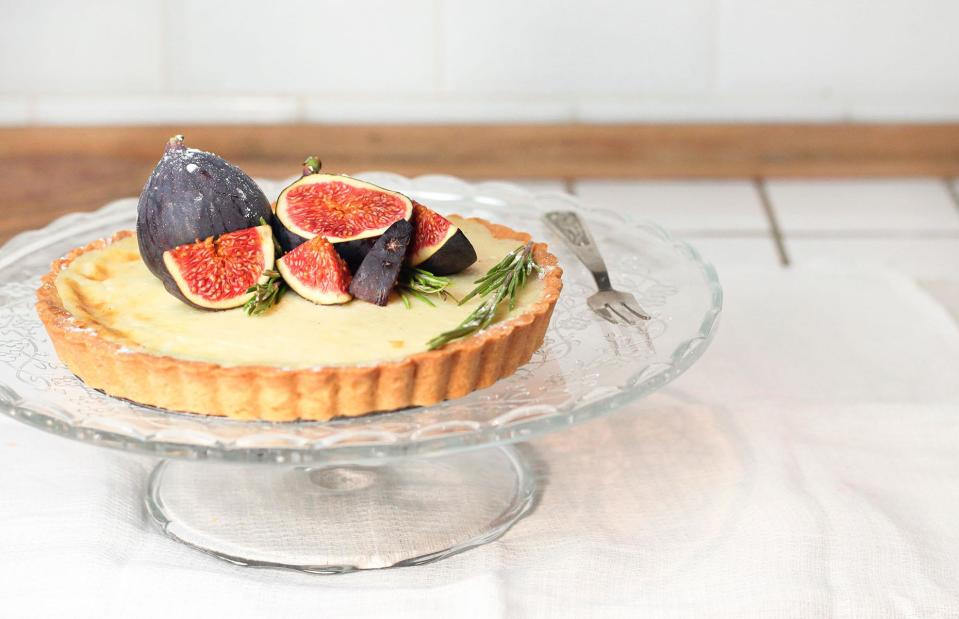
Nataliia Chubakova / Shutterstock
Thanks to the increasing popularity of afternoon tea, these one-trick ponies found their way into almost every home in the late 19th century. Often found alongside a decorative china set, cake stands were usually filled with freshly baked sweet treats.
While few homes these days feel the need for a cake stand, we're betting you know exactly where to go should you ever need to borrow one.
Teapots and cosies

Christine Bird / Shutterstock
Of course, if you had a cake stand, you would definitely have had one of these. Sadly, as the popularity of stovetop kettles and tea sets faded, so too did the need for a teapot and cosy.
When electric kettles grew popular in the mid-1950s, people no longer saw such tea sets as necessary and they fell into obscurity along with their quirky knitted covers. Should you ever feel the need for a traditional tea party, though, we're sure your grandparents have one that's ready to go.
Manual egg timers
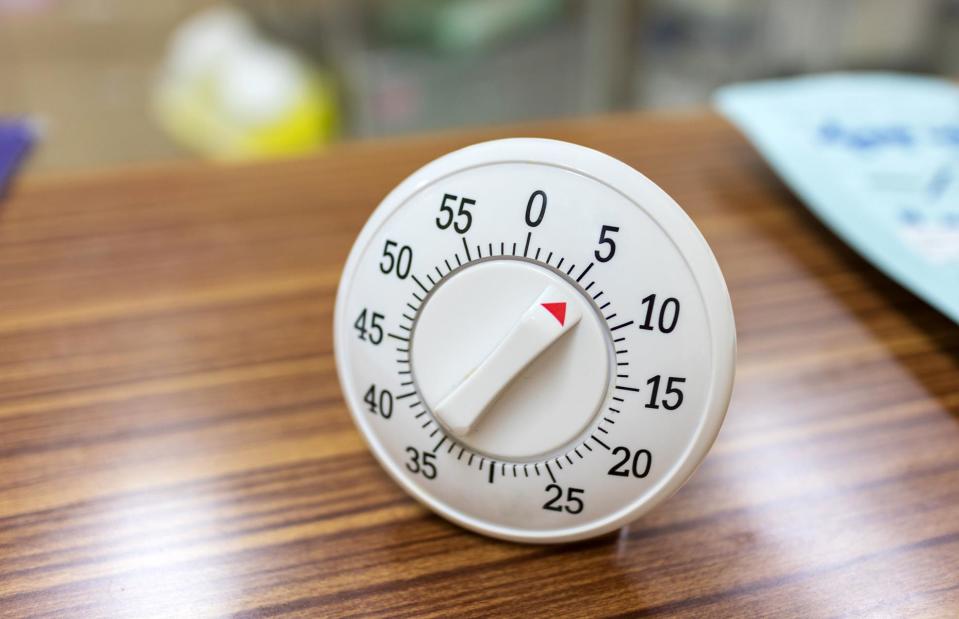
imkaopodkua / Shutterstock
In an age where Alexa and Siri didn't yet exist, cooks had to make do with a good old-fashioned kitchen timer. Whether an hourglass filled with sand or a manual timer that dinged to an end, these humble devices allowed for the perfect boiled egg.
As ovens with in-built alarms became the norm, people no longer needed them but we think you'll find that the analogue method is best when it comes to cooking eggs.
Pressure cookers
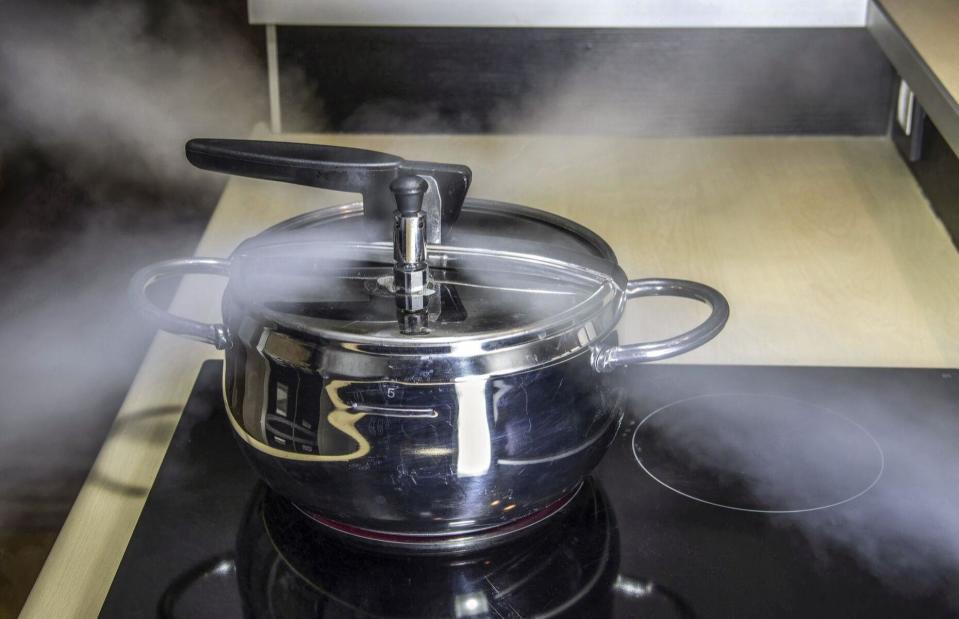
DeStefano / Shutterstock
The first pressure cooker was invented back in 1679 and became a popular home appliance during the Second World War. They are fantastic for cooking cheaper cuts of meat and help to reduce energy bills. These sealed pots don't allow steam to escape below a fixed pressure, simulating braising or simmering, but in a much shorter time.
Modern slow cookers and smart ovens rid homes of these clever appliances but we're guessing your grandma may well still own one.
Egg separators
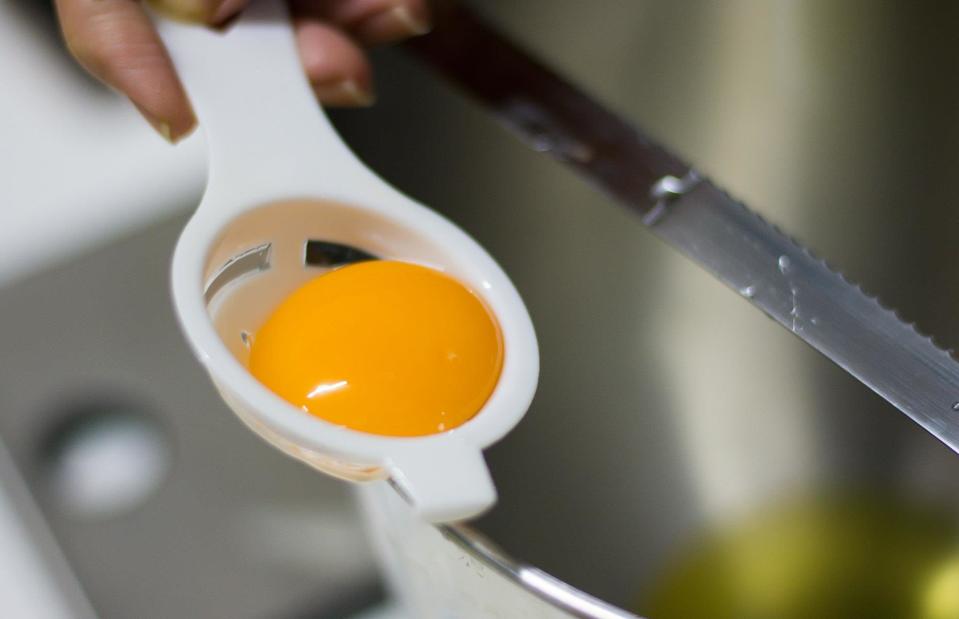
Pravit Boonjang / Shutterstock
As archaic as flour sifters and fondue sets, the egg separator was once an essential kitchen instrument. The first was made from tin and allowed cooks to split the white from the yolk with ease. Before this, people simply had to use their hands to do the job, so egg separators were truly seen as the height of modern technology.
Now a thing of the past, these unusual devices can still be discovered lurking in the kitchen drawers among committed bakers...
Ice crusher
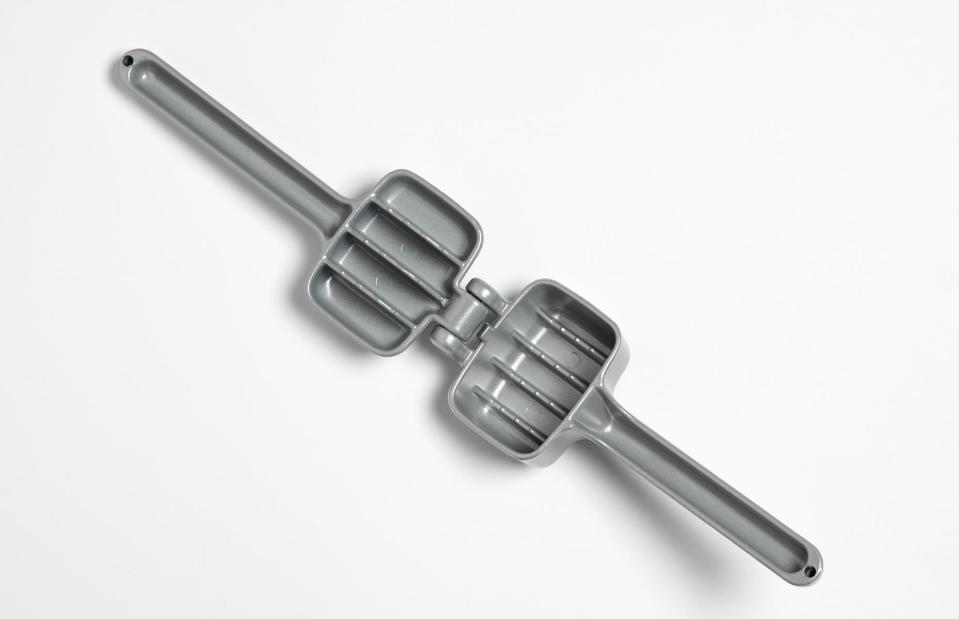
macro videography / Shutterstock
In the days when your fridge couldn’t magically crush ice at the touch of a button, this handy device was the best you could get. Ideal for cocktail making, the handheld ice crusher was a mid-century kitchen utensil, mostly used at small dinner parties and bars.
With its one cube at a time abilities, few homes will still have the old-school crusher, which makes them a real gem for vintage fans.
Pyrex casserole dishes
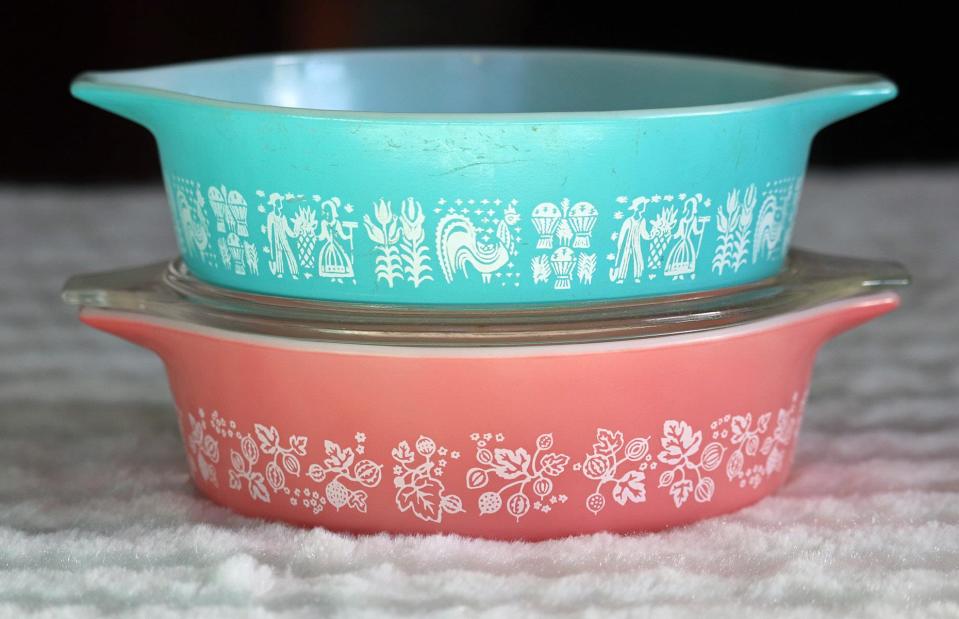
Jennie Barclay / Shutterstock
Since 1915, Pyrex has been a huge homeware name. Offering us everything from reusable storage boxes to oven-proof dishes and heat-resistant measuring jugs, Pyrex products can be found in many homes to this day.
Increasing in popularity in the 1950s, Pyrex's decorative casserole dishes have now somewhat fallen out of favour with modern homeowners. Yet head over to grandma's place and you may well find a unique collection of crockery, just waiting to be filled with stew.

